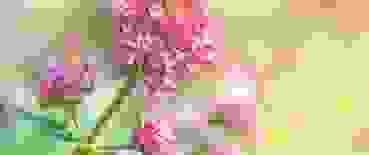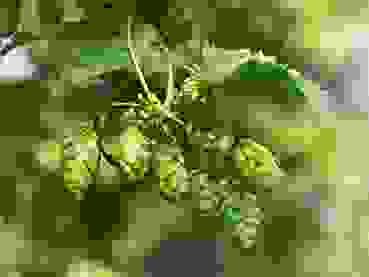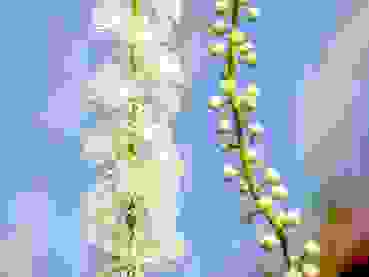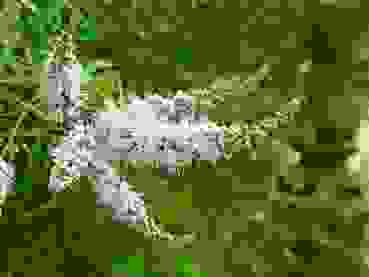
Phyto Story - Valerian (Valeriana officinalis)
Many people are aware that valerian (Valeriana officinalis) is a medicinal plant with calming, sleep-inducing properties. It has also proven to be effective for nervousness, test anxiety or restlessness in combination with other medicinal plants. This is why valerian is one of the most commonly used herbal tranquillisers. In contrast to chemical sleeping aids, the plant rarely has any side effects, is not addictive and does not upset the natural sleep-wake rhythm. Read more here about valerian, its properties and uses.
October 20, 2020
Prevalence and spread of valerian
Valerian (Valeriana species) belong to the family of valerianaceous (Valerianaceae): woodbine plants. There are more than 300 different types of valerian in the Valeriana plant genus. They are widespread in the northern hemisphere in Asia, Europe, North America and South America. Many of these types grow at higher altitudes. They are also sometimes found in mountain regions – in the Andes, for example.
Valerian (Valeriana officinalis) is often used for medicines. It grows wild in most of Europe and can be found eastwards as far as China, Korea and Japan. The plant is also native to Switzerland, primarily in warmer, higher situated areas. The plants often grow in fields near streams, rivers or lakes.
If you have a suitable, sunny and moist location in the garden, several types of valerian can also be planted as ornamental plants, medicinal plants or plants for bees.
Appearance and characteristics of the valerian plant
Valerian grows up to two metres in height. It is a hardy perennial, which survives with underground rhizomes. The high stem has large pinnate leaves and flowers form in umbels in the early part of the year, from May to June. The many small, individual flowers can range from white to pink in colour. The unusual, intensely sweet smell of the inflorescence is noticeable.
History and characteristics of valerian
When valerian root is dried, this produces the typical valerian smell. People do not usually like it. However, it is as attractive to cats as the well-known catnip. Therefore, the terms yarrow and “stink root” are also used as common names. Legend has it that the Pied Piper of Hamlin had valerian on him to attract the rats. Valerian extracts are also used in the manufacture of perfumes. In tiny amounts, they lend perfume mixtures a mild musky note. Depending on the species, isovaleric acid is the ingredient responsible for the strongly attractive or repellent odour. Unpleasant foot odour is also based on this substance, among others. Particular bacteria form leucine, the isovaleric acid, which is found in sweat.
The intense smell is also the reason why the valerian plant was often hung by Nordic peoples above the house door as protection against bad spirits in olden times. If you carried a piece of the plant with you, it was said to protect you from witches and the devil. The still commonly used local name of enchanter’s nightshade is a testament to this today. According to folklore, if a hanging bunch of valerian moved in a room, an invisible ghost or a witch was said to have entered.
Valerian root has been used in folk medicine for many centuries. The positive effect as a relaxant or calming medication was already known in the olden days. Valerian was often administered together with lemon balm or hops, which has proven to be a useful combination up to modern times.
Ingredients and effect of Valeriana officinalis
Valerian root – Valerianae radix – is used medically. It contains a series of unique ingredients. They include essential oils and valepotriates from which the aforementioned isovaleric acid is separated. The essential oil of the root contains ingredients including borneol, camphor and beta-bisabolene.
Valerian calms the user and promotes sleep. Besides the integral essential oil ingredients, lignans could be responsible for this effect. These ingredients have a similar effect on the central nervous system to adenosine, a substance found naturally in the body. Adenosine is part of the system, which influences the sleep-wake cycle. It binds to A1 receptors and thus induces fatigue and sleep. Lignans from valerian root affect the same receptors. However, other ingredients of valerian may also play a role in the effect.
Applications and uses for Valeriana officinalis
Valerian preparations are the most commonly used herbal tranquillisers and extracts from valerian root are often used to treat sleep disorders. The effect on nervousness and anxiety, e.g. test anxiety or inner restlessness, has also been proven many times in studies. Many people with sleeping problems and daytime anxiety use preparations containing Valeriana officinalis. Valerian preparations are very safe and, in contrast to synthetic chemical preparations, have very few side effects.
Using valerian to treat sleep disorders
Around a third of all adults and an increasing number of school children have difficulty sleeping. Gentle herbal medicines often help to combat this problem. Valerian’s effectiveness in treating sleep disorders has been proven by numerous studies. Valerian preparations have a relaxing effect and allay distressing thoughts, thus promoting sleep. They can also help you to sleep through the night and improve the quality of your sleep. The combination with sleep-inducing hops has been proven to work particularly effectively.
Valerian root for test anxiety, tension or restlessness
Taking valerian extract has a calming effect on nervousness, tension, restless states and test anxiety. Stress and nervousness are diminished. Substances containing a combination of various medicinal plants are effective in this case, making those affected more relaxed, but not sleepy. The physical symptoms of unrest and anxiety such as spasm-like complaints in the gastrointestinal tract or palpitations can also be reduced.
Please note: You should always consult a doctor if your sleeping difficulties continue for an extended period. Herbal remedies may also have interactions and side effects. Therefore, please consult your doctor or pharmacist if you have any questions.
Topics
Filter blog posts by topic by clicking on the tags.





